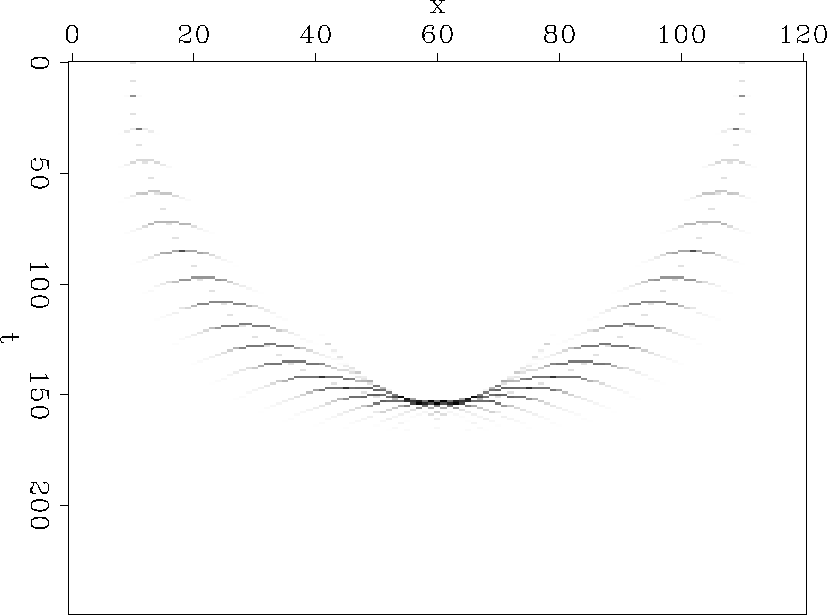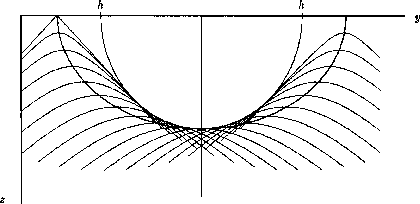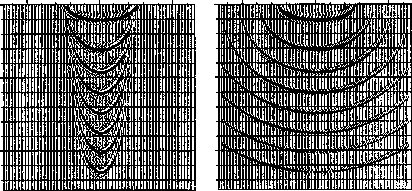




Next: Hale's constant-offset dip moveout
Up: MIGRATION WITH VELOCITY ESTIMATION
Previous: Dip moveout Sherwood's devilish
Fabio Rocca developed a clear conceptual model for Sherwood's dip corrections.
Figure 13 illustrates Rocca's concept of a
prestack partial-migration operator.
rocca
Figure 13
Rocca's prestack partial-migration operator is
a superposition of hyperbolas, each with its top on an ellipse.
Convolving (over midpoint) Rocca's operator onto a constant-offset
section converts
the constant-offset section into
a zero-offset section. (Gonzalez)





Imagine a constant-offset section P(t,y,h = h0 ) containing
an impulse function at some particular (t0 , y0 ).
The earth model implied by this data is a reflector
shaped like an ellipse,
with the shot point at one focus and the receiver at the other.
Starting from this earth model,
a zero-offset section is made by forward modeling--that is,
each point on the ellipse is expanded into a hyperbola.
Combining the two operations--constant-offset migration
and zero-offset diffraction--gives the Rocca operator.
The Rocca operator is the curve of osculation in Figure 13,
i.e., the smile-shaped curve where the hyperbolas reinforce one another.
If the hyperbolas in Figure 13 had been placed everywhere
on the ellipse instead of at isolated points,
then the osculation curve would be the only thing visible
(and you wouldn't be able to see where it came from).
The analytic expression for the travel time on the Rocca smile
is the end of a narrow ellipse,
shown in Figure 14.
rocca2
Figure 14
Rocca's smile. (Ronen)

We will omit the derivation of the equation for this curve
which turns out to be
|  |
(8) |
The Rocca operator appears to be velocity independent,
but it is not completely so
because the curve cuts off at  .
.
The Rocca operator transforms a constant-offset section
into a zero-offset section.
This transformation achieves two objectives:
first, it does normal-moveout correction;
second, it does Sherwood's dip corrections.
The operator of Figure 13 is convolved
across the midpoint axis of the constant-offset section,
giving as output a zero-offset section at just one time,
say, t0.
For each t0 a different Rocca operator must be designed.
The outputs for all t0 values must be superposed.
Figure 15 shows a superposition of several Rocca smiles for
several values of t0.
This operator is particularly attractive
from a practical point of view.
Instead of using a big, wide
ellipse and doing the big job of migrating
each constant-offset section, only the
narrow, little Rocca operator is needed.
From Figure 15 we see that
the energy in the dip moveout operator concentrates narrowly near the bottom.
dmopoint
Figure 15
Point response of dip moveout (left) compared to
constant-offset migration (right). (Hale)

In the limiting case that h / v t0 is small,
the energy all goes to the bottom.
When all the energy is concentrated near the bottom point,
the Rocca operator is effectively a delta function.
After compensating each offset to zero offset,
velocity is determined by the normal-moveout residual;
then data is stacked and migrated.
The
narrowness
of the Rocca
ellipsoid is an advantage in two senses.
Practically, it means that
not many midpoints need to be brought into the computer
main memory before velocity estimation and stacking are done.
More fundamentally, since the operator is so compact, it does not
do a lot to the data.
This is important because the operation is done at an early stage,
before the velocity is well known.
So it may be satisfactory to choose the velocity for the Rocca
operator as a constant, regional value, say, 2.5 km/sec.
An expression for the travel-time curve
of the dip moveout operator
might be helpful for Kirchhoff-style implementations.
More to the point is a Fourier representation for the operator itself,
which we will find next.





Next: Hale's constant-offset dip moveout
Up: MIGRATION WITH VELOCITY ESTIMATION
Previous: Dip moveout Sherwood's devilish
Stanford Exploration Project
10/31/1997


